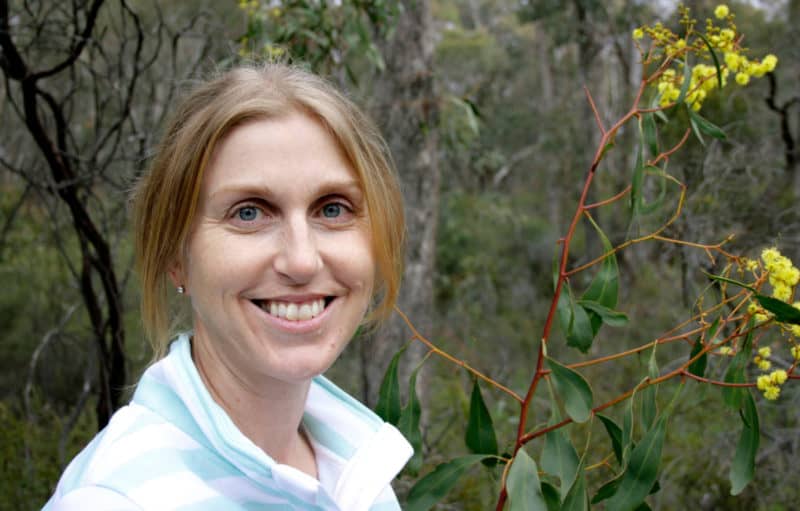Volunteer Emma Barnett and NatureWatch coordinator Christine Connelly explore Bunyip State Park and the work of the local Friends group.
Bunyip State Park is not usually the first destination choice for those wanting a ‘nature’ experience.
But the park is an ideal place to escape from the mad rush of city life, a tranquil area of bushland where it’s easy to unwind.
The park, covering 16,600ha, is just 90 minutes from Melbourne and includes three main ranges – the Blue, Black Snake and Weatherhead. It is rich in geological, botanical and cultural history.
At the height of the Last Glacial Maximum, when ice sheets had reached their highest positions, Bunyip State Park was mostly low grassland with dry snow down to 1000 metres.
Warmer and wetter conditions prevailed in the Holocene period (last 10,000 years), and the grassland began to change into what is today wet sclerophyll forest and open woodland.
Woi wurrung-speaking clans, in particular the Buluk-willam clan of the Wurundjeri people, were the first to live in the region.
There are still many plants in the park that were used by them for food and tools.
Sweet nectar was extracted from banksia flowers and weaving tools were constructed from woody stems.
The leaves of eucalypt trees were used for medicines, their bark for making bowls, and mistletoe fruits were harvested.
But there was one area that the people avoided – around the Bunyip River swamps – because it was said to be the home of the spiritual creature Buneep (the Bunyip), who punished bad people.
Surprise yourself
Don’t let the thought of the lurking Bunyip put you off! Bunyip State Park is full of beautiful surprises.
In the park’s rainforest areas, near running streams are lush havens of tree-ferns and a tapestry of climbers, lichens and mosses colonising tree logs.
At higher elevations the heathy woodlands and forests include an assortment of eucalypt species, including Messmate and Silvertop Ash. The world’s tallest flowering plant, the Mountain Ash, and the Mountain Grey Gum, are prevalent in parts.
It is especially rich in orchids and the 51 recorded species include the Pink and Twisted sun-orchids, and Nodding, Tall and Tiny greenhoods.
Bright and interesting fungi can also be spotted along most paths during colder months.
In moister areas, Pouched Coralfern can be found, with its distinct and intricate leaf arrangement.
The diverse vegetation supports many mammal species, like the endangered Southern Brown and Long-nosed bandicoots, Common Bent-wing and Eastern Horseshoe bats, White-footed Dunnart and Greater and Yellow-bellied gliders.
Bird watchers can enjoy the park’s rare owl species, including the Powerful Owl, and other interesting species such as the Golden-headed Cisticola.
For those with time, patience and a bit of luck, the unique Southern Emu-wren may be glimpsed, identified by its attractive barbless tail feathers.
You might even be surprised by the sight of a prehistoric Lace Monitor climbing a tree.
Take a hike
One of the best ways to experience the park is by walking along one of its many walking trails.
The informative and engaging Buttongrass Nature Walk highlights many of the region’s rare and special plants.
This self-guided circuit walk of three kilometres includes botanical illustrations to help visitors identify significant plants and animals.
Along the walk is a rare community of wet heathland plants of state significance.
There are also examples of Australia’s unique fire-adapted plants, attractive wattles flowering from winter to spring, descendants of ancient 300-million-year-old clubmoss, and vegetation communities including messmate forest, wet heathland and heathy woodland.
Two plant species, the Swamp Bush-pea and Button-grass, have restricted distribution in Victoria.
Find a friend
The walk was developed and is maintained by the Friends of Bunyip State Park, which was formed in the mid-1990s as a family-friendly volunteer group.
A key purpose of the group is to foster public awareness and appreciation of the natural values of Bunyip State Park and surrounding habitat.
It undertakes activities to suit all ages and abilities, including planning, creation and maintenance of walking tracks, tree planting, signage and interpretation, and restoration of habitat for indigenous animals.
The Friends of Bunyip State Park is led by its president Ian Vaskess and strongly supported by Jasper Hails, a member with great knowledge and passion for the fauna of the park. They’re only small, but they achieve a great deal.
Caught on Camera
The group is working closely with the Victorian National Parks Association on the Caught on Camera and the Communities Listening for Nature wildlife monitoring projects.
From August to November, Ian and Jasper lead volunteers for three-weekly monitoring activities with the support of the VNPA’s NatureWatch program.
Now in its fifth year, Caught on Camera uses motion-sensing cameras to gather data about mammals that is important for park management.
The newer Communities Listening for Nature project is using automated sound recording to monitor birds.
The monitoring has taken place across most of the park except, until recently, the difficult to access northern part of the park.
Ian and Jasper were especially keen to see what species the cameras and sound recorders would find along the Blue Range.
So, on 29 October 2016, the Friends of Bunyip State Park and VNPA teamed up with the Land Rover Owner’s Club of Victoria, to access the Blue Range Road.
After some tricky vehicle manoeuvring, the cameras and sound recorders were installed in little-visited vegetation high on the Blue Range ridge.
The day was a great success and a fine example of what can be achieved when small Friends groups work with bigger groups to achieve their aims.
We’re all looking forward to seeing what the monitoring reveals.
Get involved
If you want to learn more, or to get involved with any of our NatureWatch community-led nature monitoring projects, contact our coordinator, Christine at [email protected] or on 9341 6510.
